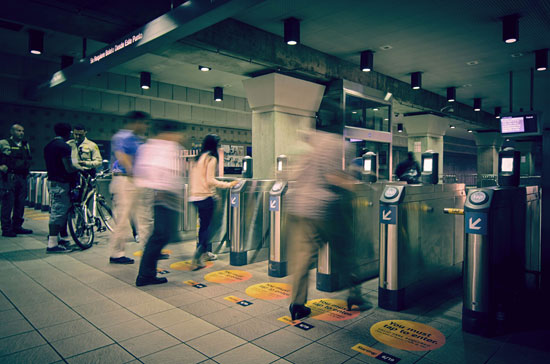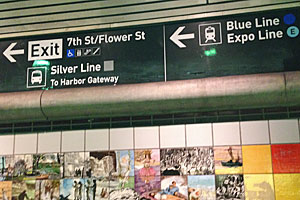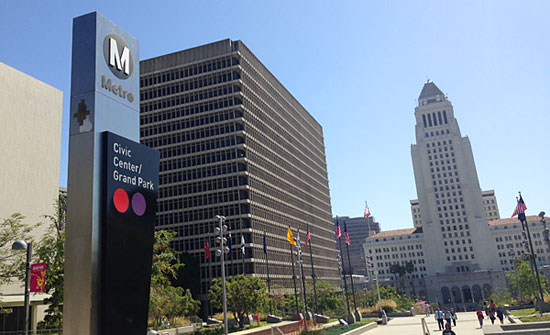Fare hike with a freebie
March 19, 2014
As Metro considers changing its fare structure, proposed price increases have captured attention—and generated controversy—as a March 29 public hearing approaches.
But embedded in the plans under consideration is an element that promises to be a bargain for some riders: free transfers.
Metro estimates that half of its customers transfer at least once during their bus and rail trips. Under the current fare structure, individual ticket-buyers must pay an initial fare to ride and then pay again every time they change lines. For those paying the full base fare, that means choosing to pay $1.50 for each leg of their journey, or purchasing a day pass currently priced at $5.
Under the fare restructuring proposals now under consideration by Metro’s Board of Directors, passengers would pay once to board and then would be able to transfer for free within the system as frequently as they wish for 90 minutes. It’s a way of addressing the growth of a system in which bus and rail transfers are increasingly essential to getting around—and Metro is calculating that giving away transfers will eventually benefit the bottom line by enticing more people to try, and stay with, public transit.
Those customers will, however, be paying more to board in the first place if the plan goes through. And those purchasing Metro passes would, in many cases, be hit with even sharper price increases than single-trip buyers.
If Metro’s board approves the proposed changes at its May 22 meeting, the cost of a regular Metro base fare would go from $1.50 to $1.75 starting in September, rising to $2 in fiscal 2018 and to $2.25 in fiscal 2021. Day passes would go from $5 now to $7 in September, $8 in 2018 and $9 in 2021. Other passes, including discounted cards for seniors, students and the disabled, would go up as well. Details are here.
A second proposal under consideration would also raise fare and pass prices, but would include off-peak and peak pricing options to give riders a break if they don’t travel at rush hour.
A major critic of the fare hike plan is the Bus Riders Union, which contends that the proposed fare hike would hurt the poor and violate the civil rights of minorities. Since 1995, Metro has raised fares three times, with the base fare increasing 25 cents to its current $1.50 in 2010, although seniors, students and the disabled were exempted from that increase.
On a late morning this week at the 7th Street/Metro station in downtown L.A., several commuters said they view the proposed fare hikes as a reasonable trade-off for free transfers. But others said they’d rather see different kinds of improvements.
For example, Ural Garrett, a freelance writer and photographer, said that in addition to free transfers, the agency should offer discounted fares for round trips.
Bus security is a big issue for Chigo Ikeme, a 19-year-old student at the Fashion Institute of Design & Merchandising who makes multiple transfers to get to her job at the Citadel Outlets. She said she would willingly pay more if the funds went directly to boosting security on buses—but otherwise is against any fare increases.
“I feel that they shouldn’t raise the fares,” she said. “Especially for a student, it’s hard to have to pay extra.”
Ikeme and others said they’d like to see Metro’s free transfer program expanded to allow them free passage on buses run by other local transit lines. People who buy Metro’s $85-a-month EZ Pass can do that now, and under the fare restructuring plan, all regular monthly passes would be merged into the program by 2018. By then, the monthly price would be $120—but daily, weekly and discounted passes for students, seniors and the disabled would not be included.
Nevertheless, Reagan Cook, who’s studying for his master’s degree in international relations at USC, said he considers Metro a good deal.
“I come from Toronto, Canada, and I still think the Metro service is incredibly cheap in L.A., relatively speaking,” Cook said. “I understand that they have to increase it eventually.”
Metro officials say the increases are needed to help it offset an operating deficit that will be $36 million by 2016 and is projected to grow in a decade to $225 million. And they add that Metro fares remain a bargain compared to those in place elsewhere, with San Francisco Muni customers paying $2 a ride, New York subway passengers $2.50 and Chicagoans $2 for buses and $2.25 for trains. In addition, all of those agencies allow free transfers, according to Metro spokesman Rick Jager.
“We have absolutely the lowest fares in the country,” Jager said. “If we don’t do something now…we’re looking at huge deficits in coming years.”
Jager said it’s also a chance to give more bang for the buck to cash customers, who pay $1.50 per trip compared to about 70 cents for pass-holders, who enjoy the discount that comes with buying their transit trips in bulk, so to speak.
Cash customers, Jager said, “are really putting more money into the fare-box than the pass-holder…We want to equalize the system to try to be fair to all of our riders.”
In any case, Metro riders are getting a heavily subsidized ride—and will likely continue to do so.
In a report to Metro’s board in January, the agency’s staff said that its “fare box recovery ratio”—the portion of revenue it receives from the traveling public—is just 26%, the lowest of any major U.S. transit agency. The fare increases are intended to bring that to 33% by 2021.
The public hearing will take place at 9:30 a.m. on March 29 at Metro headquarters in downtown Los Angeles. Those who’d like to comment in writing can send an email to [email protected] or a letter to: Los Angeles County Metropolitan Transportation Authority, One Gateway Plaza, Los Angeles, CA 90012-2932 Attention: Michele Jackson.
Posted 3/19/14















 405 bridge work causes a stink
405 bridge work causes a stink

